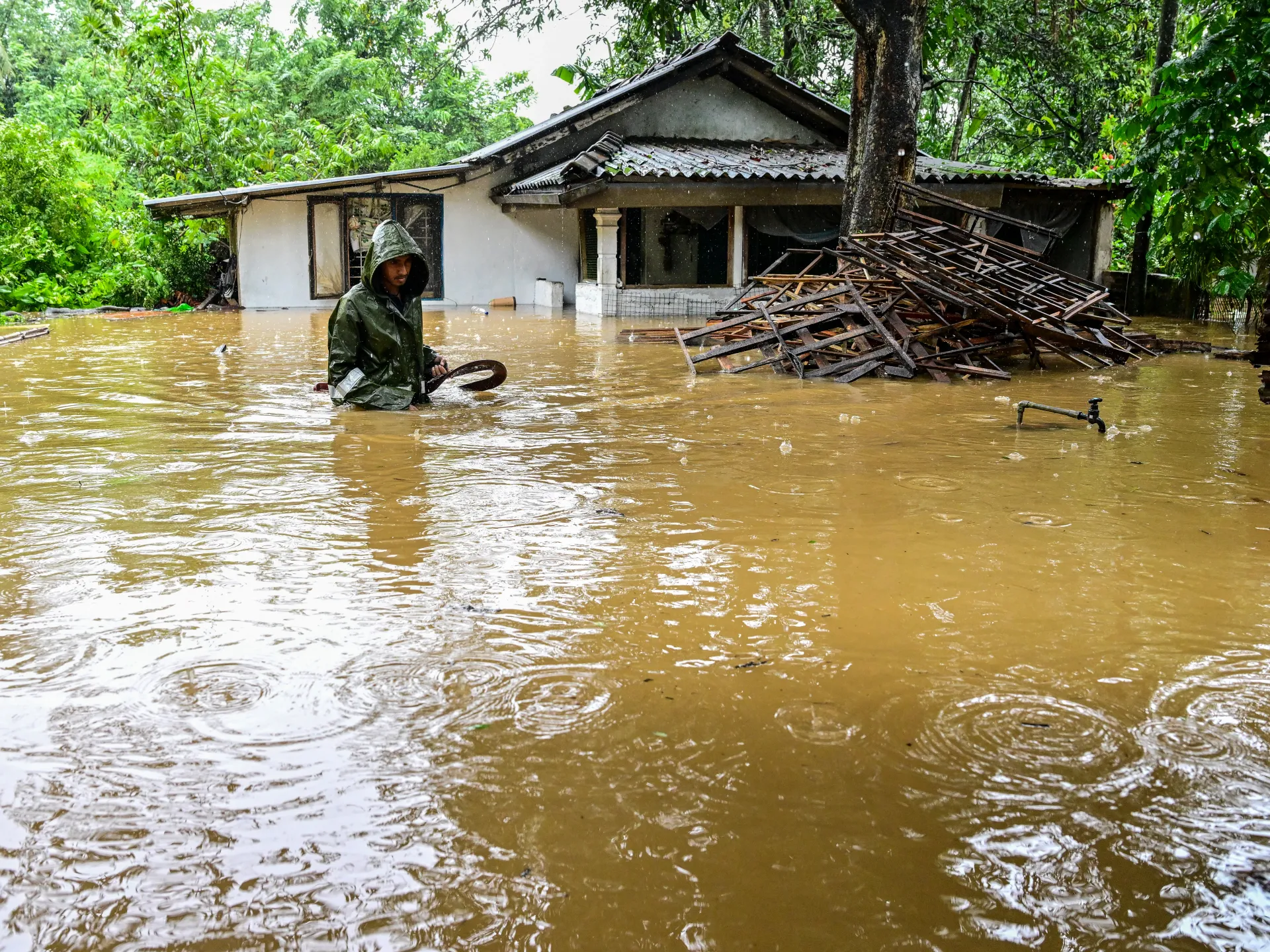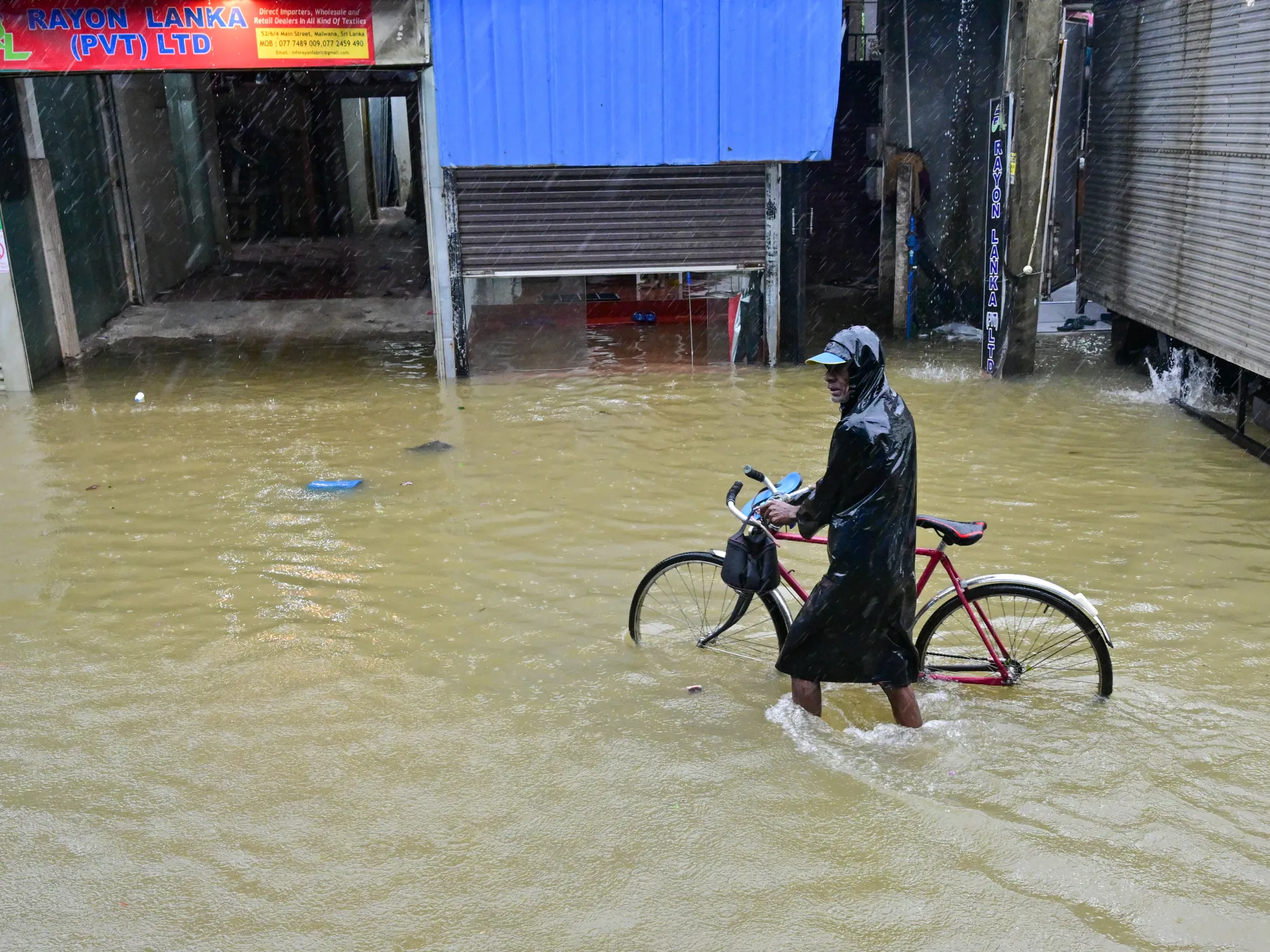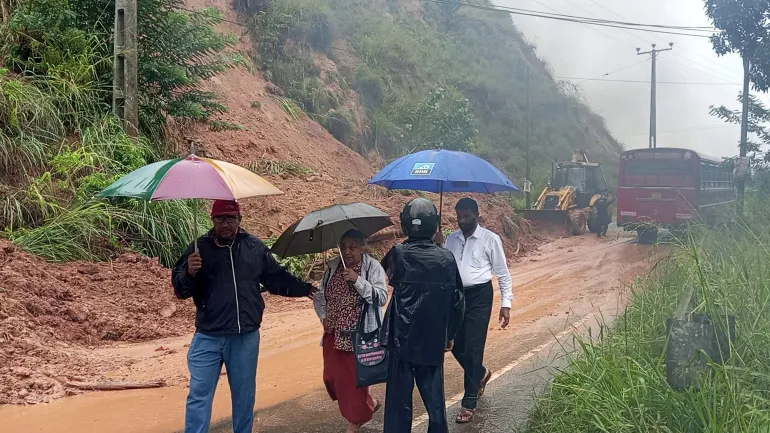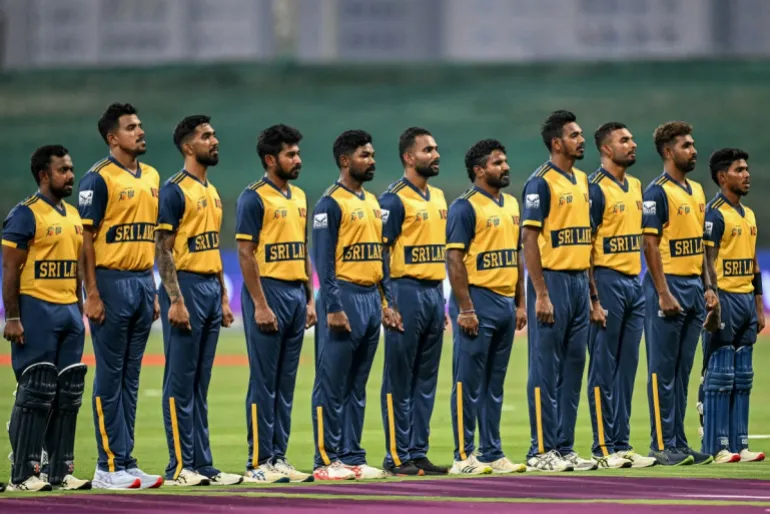Sri Lanka seeks foreign help as Cyclone Ditwah death toll reaches 123 | Floods News
Some 44,000 people displaced by flooding across the country as relief operations intensify amid widespread destruction.
Published On 29 Nov 2025
Sri Lanka has made an appeal for international assistance as the death toll from heavy rains and floods triggered by Cyclone Ditwah rose to 123, with another 130 reported missing.
The extreme weather system has destroyed nearly 15,000 homes across the country, sending almost 44,000 people to state-run temporary shelters, the Disaster Management Centre (DMC) said on Saturday.
Recommended Stories
list of 4 itemsend of list
Although Cyclone Ditwah was heading towards neighbouring India to the north on Saturday, more landslides have hit the central district of Kandy, 115km (70 miles) east of the capital Colombo, with the main access road under water at several locations.
DMC Director-General Sampath Kotuwegoda said relief operations had been strengthened with the deployment of thousands of members of the army, navy and air force as he announced the latest casualty figures.
“Relief operations with the help of the armed forces are under way,” Kotuwegoda told reporters in Colombo.
Mahesh Gunasekara, the secretary-general of the Sri Lanka Red Cross Society, said many people have been stranded in various flood-hit areas as rescue crews are trying to reach them.
“Relief needs have been increasing. After two days, water has still been swelling,” he said.
“Although the cyclone is slowly moving away from the country, it is not over for us yet,” Gunasekara added.
Flooding prompted authorities to issue evacuation orders for those living along the banks of the Kelani River, which flows into the Indian Ocean from Colombo.
The Kelani burst its banks on Friday evening, forcing hundreds of people into temporary shelters, the DMC said.
The government issued an appeal for international help and asked Sri Lankans abroad to make cash donations to support nearly half a million affected people.
Officials said Prime Minister Harini Amarasuriya had met with Colombo-based diplomats to update them on the situation and seek the help of their governments.
India was the first to respond, sending two planeloads of relief supplies, while an Indian warship already in Colombo on a previously planned goodwill visit donated its rations to help victims.
Indian Prime Minister Narendra Modi expressed his condolences over the deaths in Sri Lanka and said New Delhi was ready to send more aid.
“We stand ready to provide more aid and assistance as the situation evolves,” Modi said on X.
While rain had eased in most parts of Sri Lanka on Saturday, including the capital, parts of the island’s north were still experiencing showers due to the residual effects of Cyclone Ditwah.
DMC officials said they expected flood levels to exceed those recorded in 2016, when 71 people were killed nationwide.
This week’s weather-related toll is the highest since June last year, when 26 people were killed following heavy rains.
In December, 17 people died in flooding and landslides.





